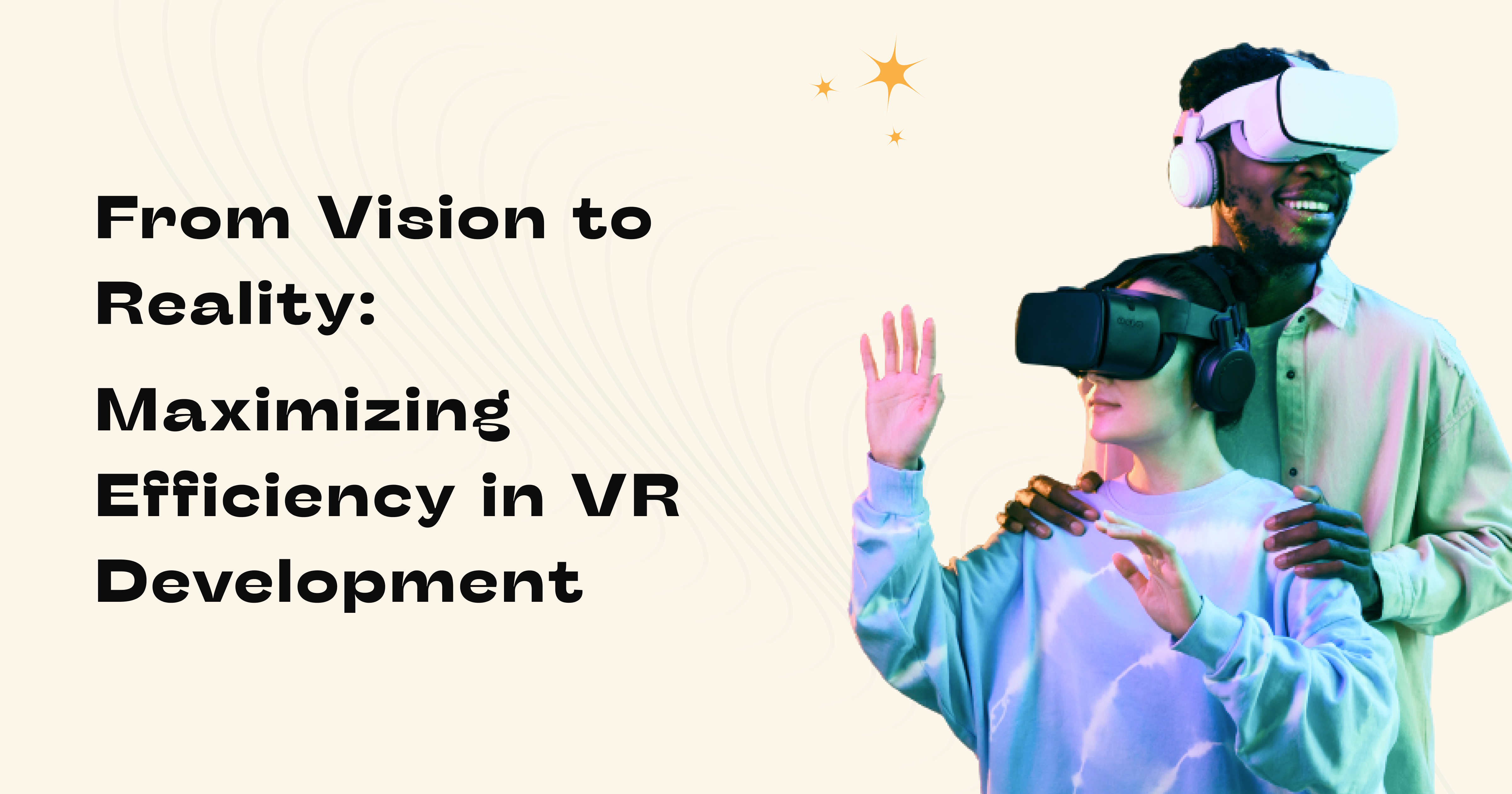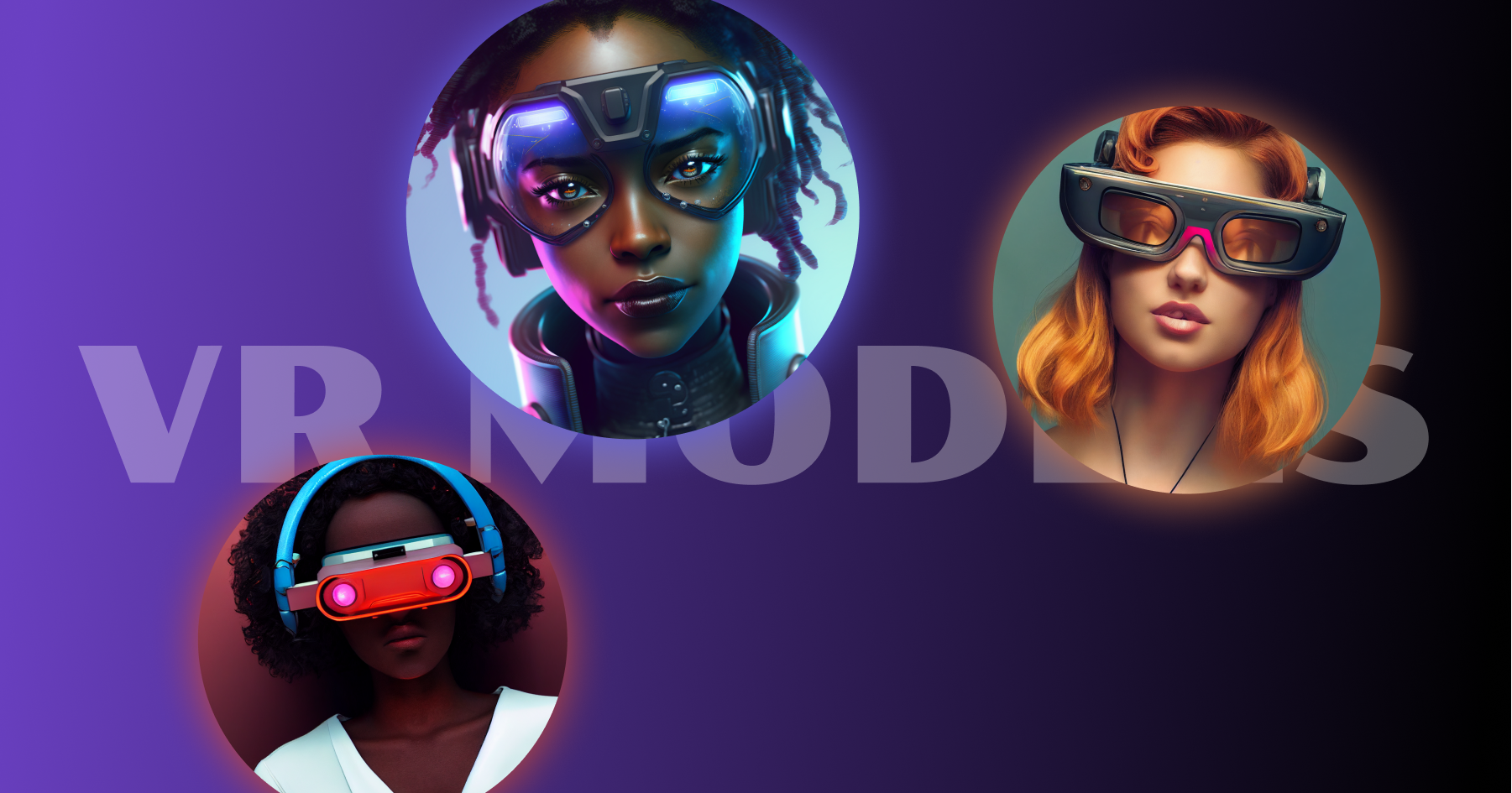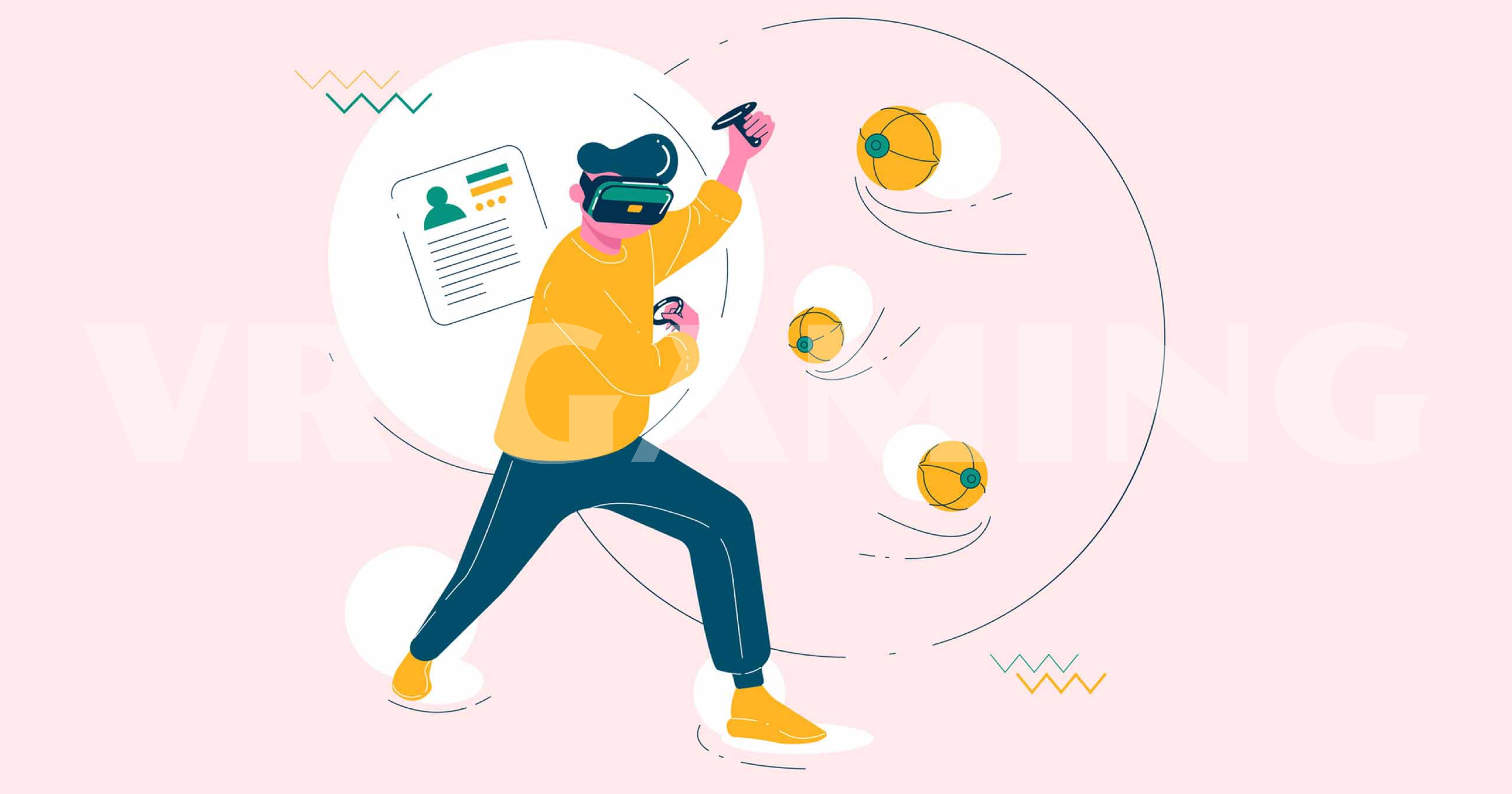From Vision to Reality: Maximizing Efficiency in VR Development

Creating a fully immersive virtual reality (VR) environment is complex and time-consuming. Meticulous attention to detail and the involvement of multiple specialists make it a challenging process. Each VR scene requires 3D artists, designers, animators, and programmers to work together to bring it to life. The problem arises when unique VR models are created for each project, resulting in significant time and resource consumption.
To address this problem, developing effective processes and strategies that optimize the development of VR models is of great importance. In particular, this involves exploring networking and reusability approaches that can significantly improve the efficiency and cost-effectiveness of creating VR environments. By adopting these approaches, our developers will optimize their workflows, reduce duplication of effort, and maximize the reusability of already created assets, ultimately contributing to the growth and scalability of VR environment projects.
The intricacies of creating a VR environment and its labor intensity.
Creating a virtual reality (VR) environment is labor-intensive and demands meticulous attention to detail. Each aspect must grate from 3D modeling to interactive elements to deliver a cohesive and realistic experience. This complexity requires the expertise of a specialized team, collaborating to plan, implement, and optimize development.
By streamlining workflows, utilizing advanced software and tools, and fostering effective communication and collaboration, we create efficient, high-quality immersive experiences while maximizing resources and minimizing overhead.
An introduction to networking and reusability in creating a VR environment at UST.
Networking and reusability play a pivotal role in creating VR environments, offering immense benefits in terms of efficiency and cost-effectiveness. Building contacts and establishing a network of reusable assets, such as pre-designed VR models, textures, and animations, allows development teams to leverage existing resources, reducing the need to recreate assets from scratch for each project.
This promotes scalability, enabling teams to replicate elements or scenes efficiently while maintaining consistency and quality across different experiences. Furthermore, networking and reusability contribute to collaboration and knowledge-sharing within the VR development community, facilitating the exchange of ideas, best practices, and technological advancements.
Understanding the complexities of creating VR models

Not too long ago, in the field of immersive game creation, our team of digital product engineers embarked on a quest to craft captivating experiences that would transport users to fascinating worlds. We dedicated ourselves to the labor-intensive process of meticulously creating VR models, leveraging our expertise in mobile development, software development, website development, and DevOps engineering. From complex 3D objects to lifelike animations, we applied our technical prowess to lay the foundation of these virtual realms. Our collaboration as a team of specialists, including 3D artists, texture artists, animators, and programmers, allowed us to seamlessly integrate our skills in creating complete VR scenes.
However, we needed to know the challenges and costs of developing unique VR models for each project. We implemented alternative strategies such as asset reuse, modular design principles, and centralized asset management systems to optimize efficiency and mitigate expenses. These discreet yet impactful techniques and our technical expertise allowed us to streamline the build process and ensure consistent project quality.
As we embarked on this creative quest, we recognized the importance of specialists working together. On our team, 3D artists brought virtual objects and characters to life with precision, texture artists created realistic materials, animators breathed fluidity into digital objects, and programmers coded interactive mechanics. Sound designers filled scenes with immersive sound, and UX/UI designers created intuitive interfaces. These specialized functions' seamless coordination and integration allowed us to create complete VR scenes.
Creating unique VR models for each project posed challenges and costs. Customization was necessary to align with specific visions and requirements, but it consumed time and effort, increasing production costs. Coordinating changes between teams and stakeholders added complexity, while quality inconsistencies were potential pitfalls. To overcome these obstacles, we adopted alternative strategies. Leveraging asset reuse, modular design principles, and centralized asset management systems, we streamlined the build process, cut costs, and ensured consistent project quality.
Making Contact: Reusable Strategies for Creating VR Environments

- Importance of reusable component development.
The development of reusable components is of paramount importance in the field of virtual reality (VR) model building. Development teams can significantly optimize their workflows and increase efficiency by investing time and effort in creating assets, textures, animations, and other components that can be reused across projects. Reusable components can speed up the iteration and prototyping process and reduce the need to recreate similar assets from scratch. This approach saves valuable resources and ensures consistency and quality across VR projects.
Moreover, it promotes scalability by allowing teams to quickly build and customize scenes using pre-designed components, ultimately speeding up the development process and increasing productivity.
- Consider the benefits of creating an extensive library of pre-designed virtual reality models.
Creating an extensive library of pre-developed virtual reality models offers many benefits to development teams. It is a valuable resource repository containing a variety of assets that can be easily accessed and utilized in future projects.
Developers can easily search, select, and integrate ready-made models into new scenes, greatly reducing production time and costs. In addition, the library allows for consistency and coherence across different VR projects, as all assets have been tested and finalized for quality.
Cost-effectiveness and efficiency in creating VR models
In VR model creation, developers strive for cost reduction and streamlined workflows. Procedural generation offers a remarkable solution by dynamically generating virtual environments, objects, and textures through algorithms and rule-based systems. This groundbreaking approach eliminates manual creation, saving time and effort while unlocking efficiency, scalability, and cost-effectiveness. Performance optimization is another crucial aspect, where techniques like level of detail rendering, occlusion culling, and optimized texturing ensure smooth frame rates and immersive experiences. Open-source frameworks and community-generated resources are vital, offering collaboration, innovation, and a wealth of readily available assets. Embracing these strategies, developers forge a collective journey towards efficiency, cost-effectiveness, and cooperation in the VR development industry.
Cost and time savings are achieved through a contact approach.
As a digital product engineering company with expertise in mobile development, DevOps engineering, and website development, we embarked on developing a fully immersive VR game set in a post-apocalyptic world. Utilizing our technical prowess, we meticulously crafted a detailed virtual environment with crumbling buildings, overgrown landscapes, and ominous effects. Our specialists, including mobile developers, DevOps engineers, and website developers, worked tirelessly to ensure realistic physics, intuitive controls, and immersive audio that draw players into a dystopian reality. We implemented an approach to optimize our development process and save costs.
By building a library of reusable assets, we accelerated our workflow, allowing us to focus on refining gameplay mechanics and pushing the boundaries of immersion. The result was an unforgettable VR experience that captivated players while maximizing efficiency and resource utilization.
The problem of pattern repetition

As our team of talented designers, developers, and artists delved deeper into the realms of VR, we began to uncover a recurring challenge that hindered our efficiency and economy: the repetition of models in our design and development processes.
It became clear that duplicating models posed a significant obstacle in our quest for perfection. Each time we embarked on a new project, we reinvented the wheel, recreating similar models we had painstakingly crafted. The effort and resources required for such repetition were astronomical, and the results needed to be more consistent and accurate.
Recognizing the importance of efficiency and economy in our creative endeavors, we knew it was time to address this problem head-on. We couldn’t afford to waste precious time and resources repeatedly recreating the same models. We understood that achieving consistent and accurate repetitions was crucial for streamlining our workflows and maintaining the high standards that our players had come to expect from us.
We set out on a mission to solve this problem. Our team dove deep into research, exploring innovative strategies and best practices from industry leaders. It became evident that finding a solution was not just about saving time and money but also about elevating the quality and efficiency of our work. We understood that by solving this challenge, we would unlock new heights of creativity and propel our company to the forefront of the VR industry.
Difficulty in repeating patterns
In our quest to create immersive virtual reality experiences, we discovered the complexities and labor-intensive nature of creating identical models for each project. Recognizing the importance of efficiency and economy, we embarked on a transformative journey to find innovative solutions. Through the concept of reuse, we built a comprehensive library of pre-designed VR assets, empowering our team to focus on refining gameplay mechanics and pushing the boundaries of immersion.
This approach streamlined our workflow, saved valuable time and resources, and allowed us to deliver high-quality experiences at an unprecedented pace. Our commitment to efficiency and economy has propelled us as pioneers in virtual reality, creating captivating worlds that leave a lasting impact.
We would like to let you know that we must use effective strategies that optimize the development process in the R development landscape. Our journey has unlocked the transformative power of reusability, scalability, and collaboration. We can unlock new efficiency, creativity, and profitability levels by utilizing advanced asset management tools.
In conclusion, our company is at the forefront of digital product development, offering a full range of services, including mobile development, DevOps engineering, and website development. While we have demonstrated expertise in developing fully immersive VR games, our capabilities go far beyond this area. With a team of subject matter experts, we can tackle various digital challenges, deliver exceptional results, and innovate in the digital realm. Whether you need cutting-edge mobile apps, robust DevOps solutions, or website development, our team is ready to collaborate, bringing your ideas to life and exceeding your expectations.